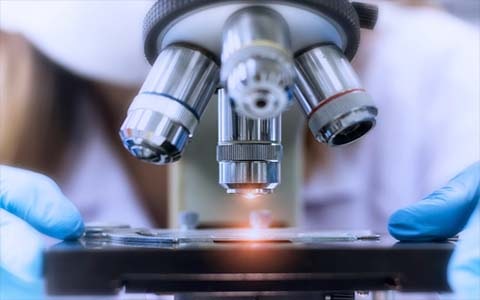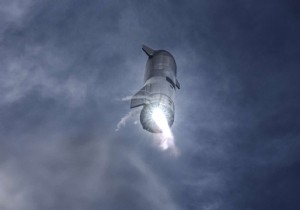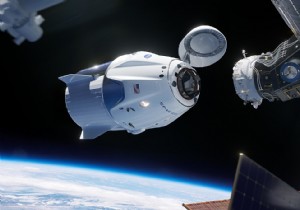
The problem to be solved by science is to discover the relationship between definite facts and phenomena in nature, and to establish theories to link facts and phenomena; science is mainly dealing with unknown areas.
Ice giants Uranus and Neptune rarely make headlines. In general, all attention is focused on the other two huge balls of gas in our system, namely Jupiter and Saturn. However, these two worlds have a lot to offer us, like real showers of diamonds. The last (and only) time we got close-up data from
A team of researchers announces that they have possibly isolated a second extrasolar moon orbiting a giant planet. If the discovery is confirmed (which could take several years), it could mean that these exomoons are as common in the Universe as exoplanets. In the past three decades, astronomers ha
As NASA continues to prepare the Space Launch System (SLS) rocket for its highly anticipated Artemis I mission, its partners continue to build other launch vehicles for subsequent missions that aim to return humans to and around the Moon. Rockets for the next ten years The United States aims to set
The Solar System is now evolving right in the middle of a thousand-light-year-wide bubble, the shell of which is giving birth to thousands of new stars. In a new study, astronomers have been able to determine how many star explosions caused this massive cosmic structure. Fifty years ago, researcher
By studying the light curve of a star located more than 1,500 light years away, astronomers have spotted an ovoid-shaped exoplanet similar to that of a rugby ball. They think the shape of the planet is caused by the intense tidal forces of its star. Details of the study are published in the journal
On September 21, the shadow of a total solar eclipse was expected to cross Australia. For the occasion, many astronomers came not only to appreciate the spectacle, but also in the hope that their observations would validate Albert Einsteins then controversial theory of general relativity, proposed s
Chinese researchers have recently developed a facility that provides low-gravity environments through magnetism in an attempt to simulate lunar conditions. Instruments will be tested inside before being sent to the Moon. An artificial moon for experiments in low gravity Located in the city of Xuzho
According to a study, recent analyzes of organic molecules isolated in a Martian meteorite crashed on Earth 13,000 years ago are not signs of life. In reality, these compounds are the result of chemical reactions between water and rock about four billion years ago, shortly after the formation of the
Data from the first survey campaign of the Dark Energy Spectroscopic Instrument (DESI) produced the largest and most detailed 3D map ever made of the universe. The image reveals a gigantic cosmic web of galaxies spanning billions of light-years. And this is just the beginning of a project. The Fate
By analyzing rock dust collected from Mars by the Curiosity rover in the Gale crater, scientists have identified particularly interesting organic compounds. One of the possible explanations for this new discovery would involve ancient microbes. Curiosity has been evolving on Mars inside Gale Crater
A study of several astronauts suggests that the human body can destroy more than 50% more red blood cells during long stays in space. These anemia problems are not yet fully understood. However, understanding this phenomenon will be vital in the context of human exploration of space. We are the pro
The US Air Force has awarded SpaceX a five-year, $102 million contract to demonstrate military cargo and humanitarian aid delivery capabilities in the world from his Starship spaceship. In its latest justification book, the US Air Force compared its budget request for fiscal year 2022 to past budge
The giant SLS launcher for the Artemis 1 mission, which plans to send an Orion capsule to circle the Moon, is set to do its wet dress rehearsal on the launch pad in February. If successful, the mission could be launched as early as next March. Most recently, this Tuesday, January 11, the access a
Roscosmos, the Russian space agency, is in the process of developing its last four Proton rockets before stopping production of this venerable, aging and very polluting launcher. These last rockets will then leave instead to the Angara launchers. A historical launcher The Proton rocket is the main
The development of the worlds first fully reusable horizontal take-off and landing spaceplane offered by Radian Aerospace has just reached a critical investment milestone. But what do we really know about this vehicle called Radian One? Washington-based Radian Aerospace announced Wednesday, January
Based on recent analysis backed by data from Cassini, Mimas, often compared to the universes Death Star Star Wars, would house an underground ocean. Finally, the Solar System is therefore an even more soggy place than we thought. The icy moons of Saturn and Jupiter have attracted a lot of attention
The James Webb Telescope has just fired its thrusters to reach its final address:Lagrange point 2. After adjusting its enormous mirror and calibrating its instruments, the most powerful space observatory ever launched will be able to start working more than 1.5 million kilometers from Earth. Its do
Seven years ago, SpaceX launched its first interplanetary mission to deliver a large climate observatory more than a million kilometers from Earth. The second stage of the Falcon 9 rocket used during this mission must soon cross the orbit of the Moon. According to a researcher, an impact could take
A little over twelve hours after the launch of Ariane 5, the thrusters of the James Webb Telescope successfully fired to correct its trajectory. This was one of the most critical maneuvers of this weeks-long journey towards the L2 point. After several years of waiting, its finally done! ThisSaturda
According to a study, rock samples collected from the asteroid Ryugu by Japan are among the most primordial materials ever examined on Earth. These could give us insight into the origins of the Solar System. Ryugu is a carbonaceous, or C-type, asteroid measuring 900 m in diameter. It evolves like a
 It's confirmed, Perseverance evolves on the bed of an old lake
It's confirmed, Perseverance evolves on the bed of an old lake
 Starship:"We'll probably lose a few vehicles along the way"
Starship:"We'll probably lose a few vehicles along the way"
 Nearly 600 new hyper-fast stars discovered
Nearly 600 new hyper-fast stars discovered
 NASA astronaut Anne McClain talks about the next generation of spacecraft
NASA astronaut Anne McClain talks about the next generation of spacecraft
 Artemis program:Dynetics unveils a first model of its lander
Artemis program:Dynetics unveils a first model of its lander